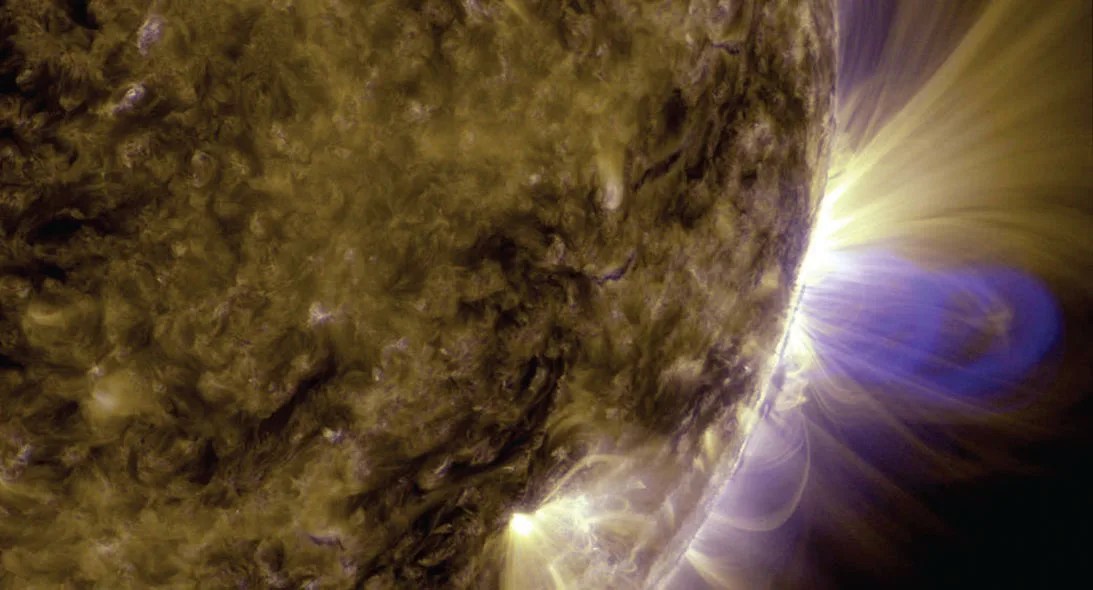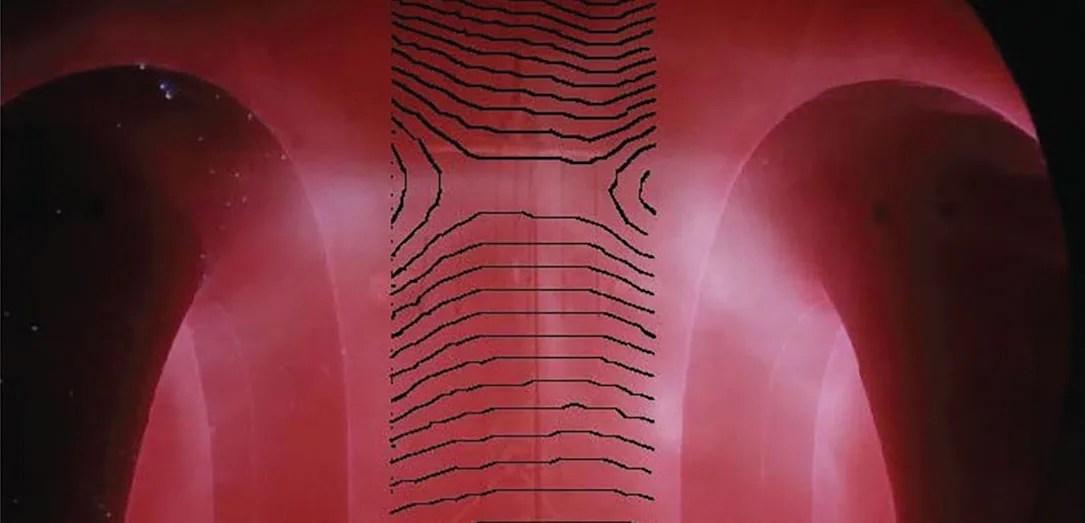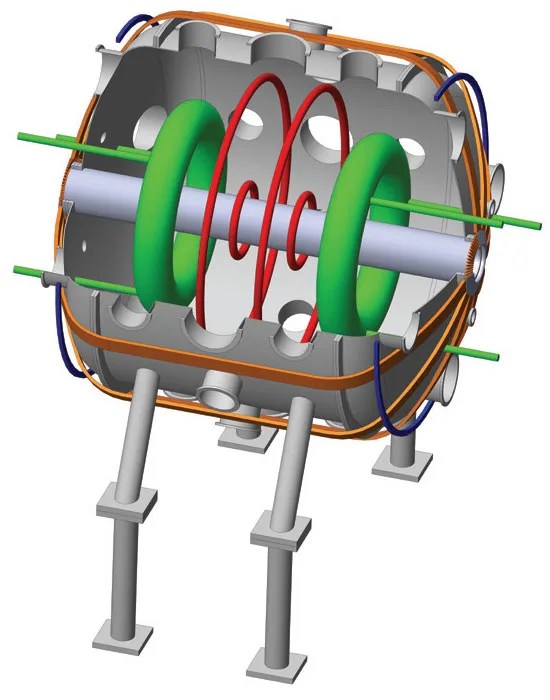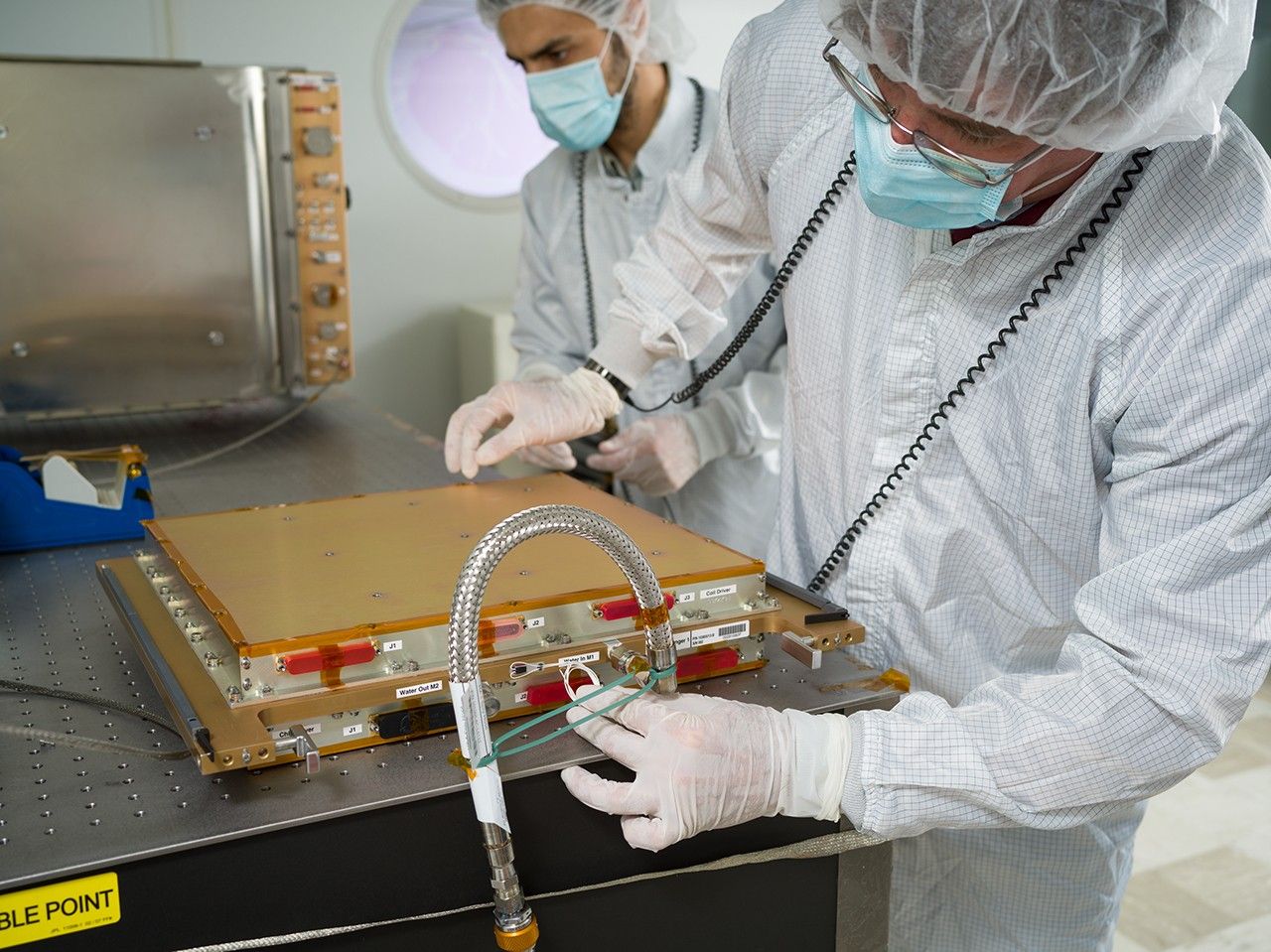Technology Development: Technological progress in recent years has significantly increased the ability to generate, control, and diagnose plasmas in the laboratory, allowing researchers to reliably reproduce important processes widely observed in space. The Magnetic Reconnection Experiment (MRX) is enabling scientists to understand several of these important phenomena, including the magnetic reconnection process and the behavior of solar magnetic loops—known as flux ropes.
The magnetic reconnection process efficiently converts magnetic energy to plasma particle energy through topological changes in the magnetic field. MRX allows researchers to generate the process of magnetic reconnection in a controlled manner by pulsing electric currents in coils inside a vacuum chamber. The time evolution of magnetic field vectors and plasma parameters are measured in the MRX chamber at a large number (typically several hundreds) of locations. These measurements have enabled scientists to characterize several aspects of the magnetic reconnection process, including the accurate determination of current sheet structures, the reconnection rate, waves and turbulence, and the energy conversion process. To study the eruption of magnetic loops, researchers use MRX to generate magnetic flux ropes between electrodes in a modified coil setup. By slowly injecting a sufficiently large magnetic free energy, the flux ropes can rapidly erupt via a large-scale instability. Both point-like and large-scale measurements of the flux ropes and associated phenomena generated in MRX enable researchers to characterize the behavior of flux ropes over a wide range of parameters.
Impact: Magnetic reconnection underlies most of the explosive phenomena observed in heliophysics, including solar flares, coronal mass ejections (CME), solar wind interaction with planetary magnetospheres, magnetic disturbances observed in Earth’s magnetosphere, and particle energization in the outer heliosphere. Reconnection also plays a key role in many astrophysical phenomena ranging from star formation to accretion onto supermassive black holes. However, many critical questions, such as why reconnection always occurs impulsively fast and what are conditions for CMEs to initiate, remain unanswered despite decades of active research. Use of laboratory experiments in conjunction with satellite observations and numerical modeling has enabled breakthroughs in understanding. MRX measurements have confirmed and validated the interpretation of results from the Polar and Cluster satellites, whose observations were necessarily limited to a few spatial points. Measurements from MRX will also enable researchers to use data from the new Magnetospheric Multiscale (MMS) mission to identify the predicted electron diffusion regions wherein field lines actually reconnect. The in situ magnetic field measurements from the MRX flux rope experiment demonstrated a promising way to understand the initiation mechanisms of CMEs and enhance space weather research.
Status and Future Plans: NASA will leverage investments in physics laboratory technology like MRX not only to understand the science from its current missions, but to guide the science targeted in future missions. Technology advances from MRX will also contribute to the next-generation Facility for Laboratory Reconnection Experiments (FLARE) device, scheduled for operation in 2017. FLARE is being proposed as a user facility for collaborative research on magnetic reconnection and related explosive phenomena.
Sponsoring Organization: The Heliophysics Division’s H-TIDeS program contributed funding to research on MRX, which was conducted at Princeton University by PI, Dr. Hantao Ji.
































